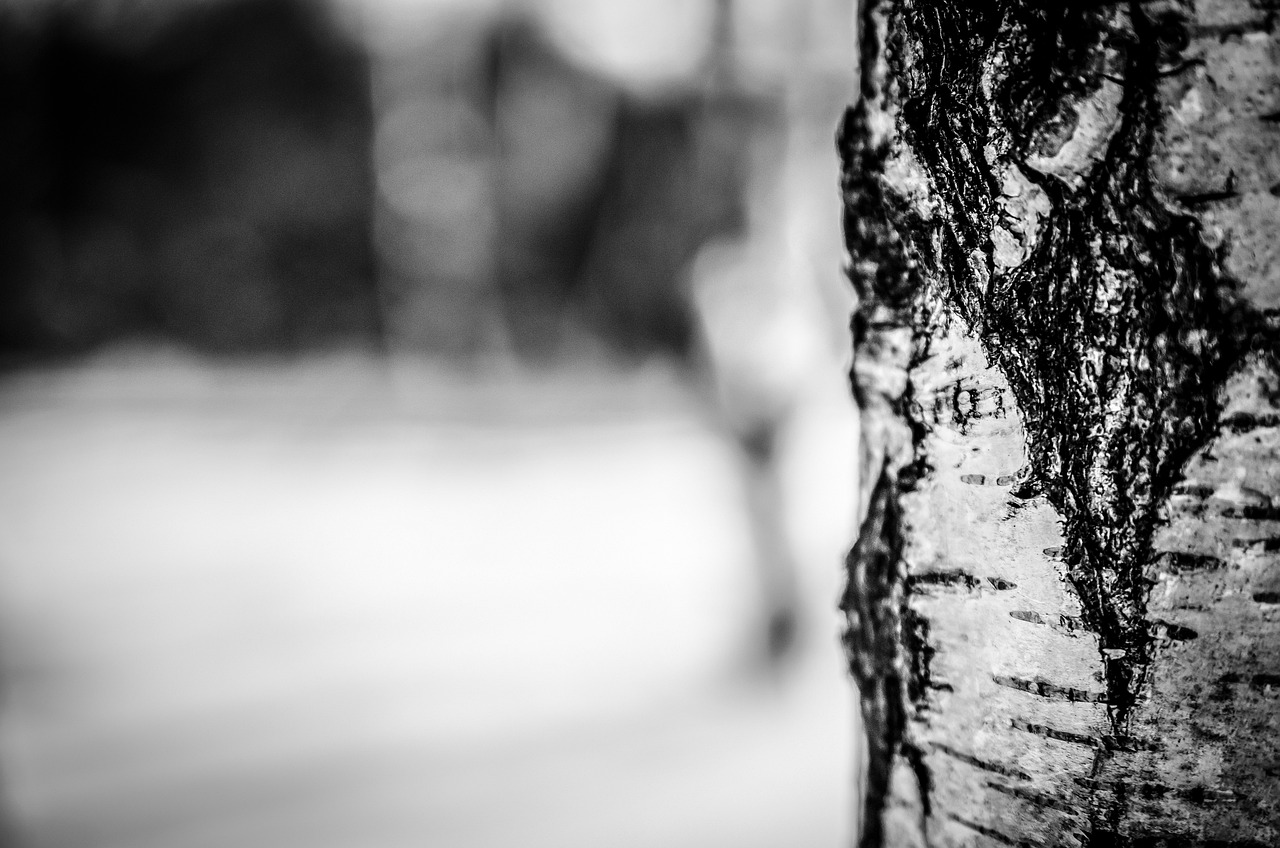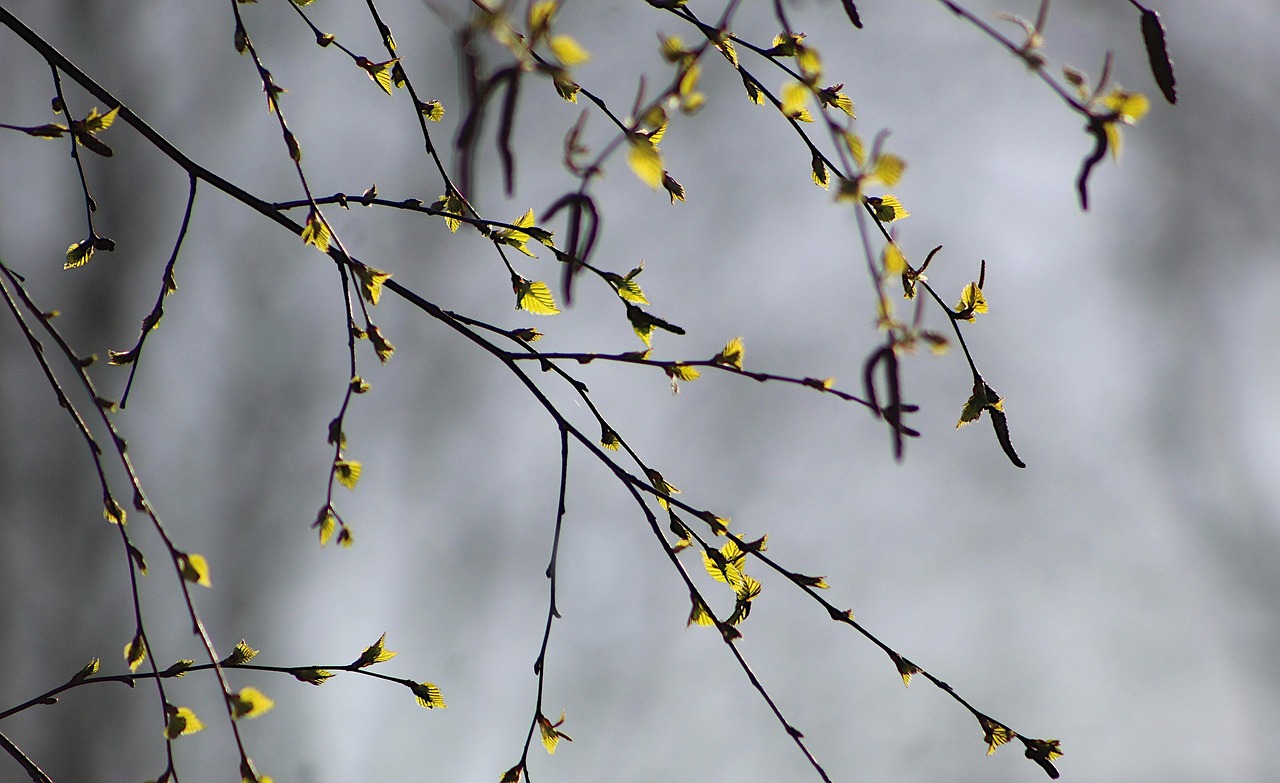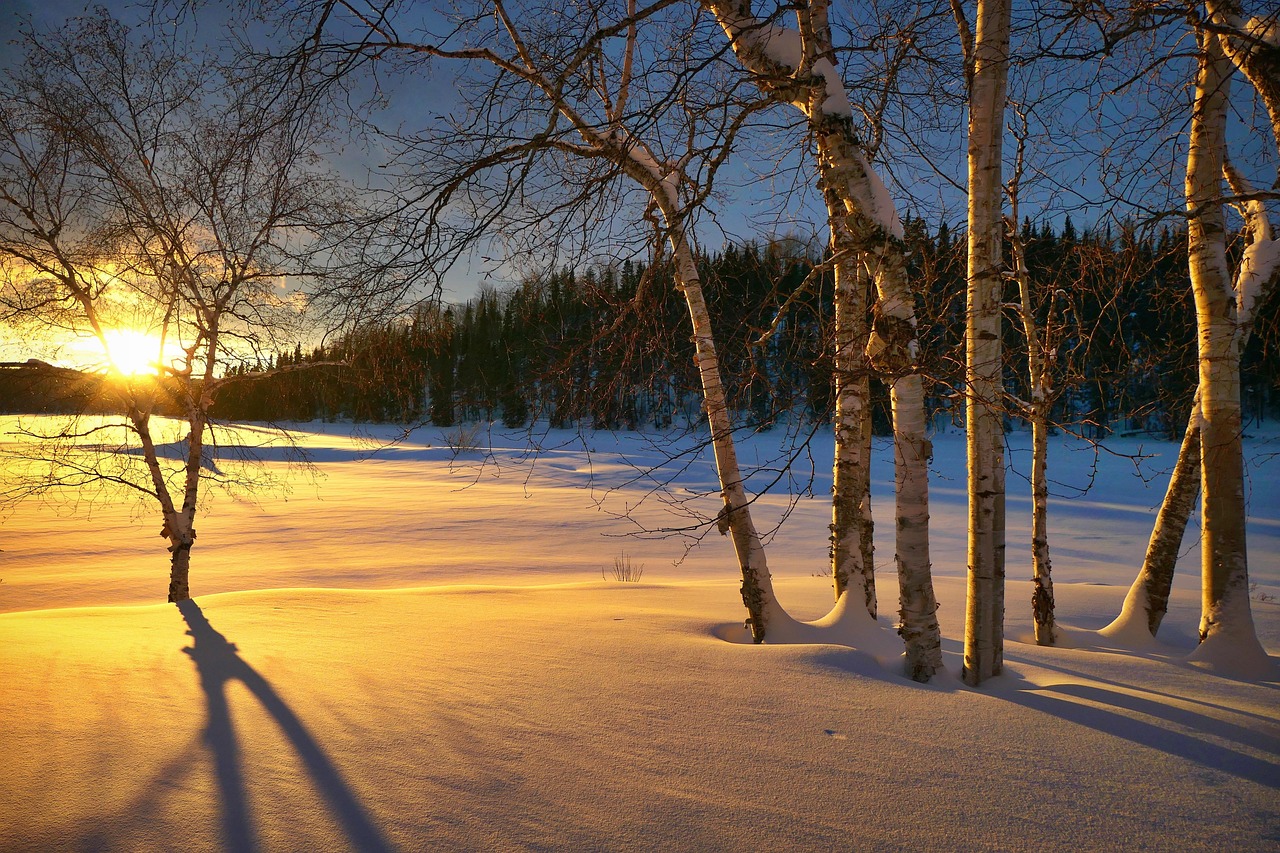Tapping birch trees for sap is a rewarding process that allows you to collect sap, which can be used to make syrup and other products. It involves selecting the right trees, using the proper tools, and following specific techniques to ensure a successful sap collection.
Understanding Birch Trees and Their Sap

Birch trees are known for their distinctive white bark and are commonly found in various regions of North America. They thrive in well-drained soils and are often associated with cooler climates. The sap of birch trees is slightly different from that of maple trees, which is more commonly tapped for syrup. Birch sap has a lighter flavor and contains lower sugar content, typically around 0.5% to 2%. However, it is rich in essential nutrients and minerals, making it a popular choice for beverages and health products.
The tapping season for birch trees usually occurs in early spring, typically before the leaves bud. During this period, the trees begin to draw water up from the ground, and sap flows from the roots to the branches. This process is influenced by temperature fluctuations, where warm days and cold nights stimulate sap flow.
Essential Tools for Tapping Birch Trees
Before you begin tapping birch trees, it is crucial to gather the necessary tools. The right equipment will make the process easier and more efficient. Here are some essential tools:
- Drill: A cordless drill with a drill bit sized for your spouts.
- Sap Spouts: These are inserted into the drilled holes to allow sap to flow out.
- Collection Buckets or Bags: Use these to collect the sap as it drips from the spouts.
- Measuring Tools: To measure the amount of sap collected.
- Storage Containers: For storing collected sap before processing.
Choosing the Right Birch Trees
Not every birch tree is suitable for tapping. Here are some factors to consider when selecting trees:
- Tree Age: Mature trees, typically at least 8 inches in diameter, are best for tapping.
- Tree Health: Choose healthy trees without visible signs of disease or damage.
- Location: Ensure the tree is in an area that receives adequate sunlight and water.
It is advisable to limit the number of taps per tree. A rule of thumb is one tap for every 10 inches of trunk diameter. This practice helps maintain the health of the tree while maximizing sap collection.
The Tapping Process
The actual process of tapping birch trees is relatively straightforward. Here are the steps to follow:
- Select a healthy birch tree with a trunk diameter of at least 8 inches.
- Use a drill to create a hole about 1.5 to 2 inches deep at a slight upward angle.
- Insert the spout into the hole gently, ensuring a snug fit.
- Attach your collection bucket or bag to catch the sap as it flows out.
After tapping, check your collection containers daily. The sap will flow best during warm days and cool nights. Keep in mind that birch sap has a shorter collection window compared to maple sap, so timely collection is essential.
Nutritional Benefits of Birch Sap
Birch sap is not only delicious but also packed with nutrients. It contains vitamins such as vitamin C and B vitamins, along with minerals like potassium, calcium, and magnesium. This nutrient-rich profile makes birch sap an appealing choice for health-conscious consumers.
| Nutrient | Amount per 100ml |
|---|---|
| Calories | 15 |
| Carbohydrates | 3.5g |
| Sugars | 2g |
| Vitamin C | 1mg |
| Potassium | 200mg |
With this knowledge about birch trees and their sap, you are now prepared to embark on your tapping journey. Understanding the importance of choosing healthy trees and using the right tools will set you up for success.
Harvesting Birch Sap
Once you have successfully tapped the birch trees, the next step is harvesting the sap. This process involves monitoring your collection containers and ensuring that the sap is collected efficiently. The quality of the sap is crucial, as it will determine the final product’s flavor and usability.
Timing for Collection
Timing is vital during the sap harvesting process. Sap flow is primarily influenced by weather conditions. Here are some key points to consider:
- Optimal Temperature: Sap flows best when daytime temperatures rise above freezing while nighttime temperatures drop below freezing.
- Monitor Weather Patterns: Pay attention to local weather forecasts to anticipate changes that could affect sap flow.
- Daily Checks: Inspect your collection buckets or bags at least once a day to ensure they do not overflow and to collect sap promptly.
Collecting Sap Safely
When collecting sap, it’s essential to maintain cleanliness to prevent contamination. Follow these steps for safe collection:
- Use Clean Containers: Ensure all collection buckets or bags are clean before use. Rinse them with water and allow them to dry.
- Wear Gloves: If possible, wear gloves during collection to avoid introducing any bacteria or contaminants.
- Seal Containers: After collecting, cover the containers with a lid or cloth to keep out debris and insects.
After collection, the sap should be processed promptly. Birch sap can spoil quickly, especially in warmer temperatures. Therefore, it is advisable to store it in a cool place until you are ready to process it.
Processing Birch Sap
Processing birch sap is necessary if you intend to make syrup, beverages, or other products. The primary method of processing involves boiling down the sap to concentrate its flavors and sugars.
Boiling Down Birch Sap
The boiling process transforms the sap into a more concentrated liquid. Here are the steps you should follow:
- Prepare Your Equipment: Use a large, flat-bottomed pan for boiling. This allows for even heat distribution and quicker evaporation of water.
- Fill the Pan: Pour the collected sap into the pan. Fill it no more than halfway to prevent overflow during boiling.
- Heat the Sap: Place the pan over a heat source, preferably outdoors due to steam production. Use a propane burner or outdoor stove for efficiency.
- Monitor the Boiling: Keep an eye on the sap as it boils. Stir occasionally to prevent scorching.
The boiling process can take several hours, depending on how much sap you have collected and its sugar content. You will know it is ready when it reaches a thick consistency and a sweeter flavor.
Measuring Sugar Content
To achieve the desired syrup consistency, measuring the sugar content of the sap is important. A hydrometer can be used for this purpose:
- Hydrometer Use: Dip the hydrometer into the boiling sap. It will float higher in liquids with more sugar content.
- Syrup Density: The syrup is ready when it reaches a density of approximately 66-67% sugar concentration.
This measurement ensures that your final product meets standard syrup criteria. Once boiled down to the correct consistency, remove the syrup from heat and allow it to cool slightly before bottling.
Bottling Birch Syrup
Bottling your processed birch syrup is an exciting step that allows you to store and share your creation. Here are some tips for effective bottling:

- Select Appropriate Bottles: Use sterilized glass jars or bottles for storage. Glass preserves flavor and prevents contamination.
- Pour Carefully: Pour the syrup into bottles while still warm but not boiling. Leave some space at the top for expansion.
- Seal Tightly: Cap the bottles securely to prevent air exposure.
After bottling, store the syrup in a cool, dark place. Refrigeration may be necessary for long-term storage, especially if you have not heat-sealed the jars.
Uses of Birch Sap and Syrup
Birch sap and syrup are versatile products that can be used in various culinary and health-related applications. Understanding the different uses will enhance your tapping experience and allow you to appreciate the full potential of birch sap.
Culinary Applications
Birch syrup is often compared to maple syrup, but it has a unique flavor profile that can add depth to many dishes. Here are some popular culinary uses for birch syrup:
- Pancakes and Waffles: Use birch syrup as a delicious topping for pancakes and waffles, providing a distinctive sweetness.
- Baking: Substitute birch syrup for sugar or other sweeteners in baking recipes. It can enhance the flavor of cookies, cakes, and muffins.
- Glazes and Marinades: Combine birch syrup with soy sauce, garlic, or mustard to create flavorful glazes for meats and vegetables.
- Beverages: Mix birch sap into smoothies or cocktails for a refreshing twist. It can also be enjoyed as a beverage on its own.
Nutritional Supplements
Beyond its culinary uses, birch sap is packed with nutrients, making it an excellent addition to dietary supplements. Here are some ways it can be utilized:
- Hydration: Birch sap is naturally hydrating and can be consumed as a refreshing drink, especially during hot weather.
- Detoxification: Some believe that birch sap supports detoxification processes in the body due to its natural diuretic properties.
- Health Tonics: Combine birch sap with herbs or other natural ingredients to create health tonics or elixirs.
Storing Birch Sap and Syrup

Proper storage of birch sap and syrup is essential to maintain their quality and extend their shelf life. Here are some guidelines for effective storage:
Storage of Birch Sap
If you have collected birch sap but cannot process it immediately, follow these storage tips:
- Keep it Cool: Store the collected sap in a refrigerator or a cool basement to slow down any bacterial growth.
- Airtight Containers: Use airtight containers to prevent contamination and reduce exposure to air, which can spoil the sap.
- Use Quickly: Ideally, use the sap within a few days of collection for the best quality and flavor.
Storage of Birch Syrup
After bottling your birch syrup, it is critical to store it properly to retain its flavor and freshness:
- Refrigeration: Store opened bottles of birch syrup in the refrigerator. This helps prevent mold growth and extends shelf life.
- Freezing: If you have a large quantity of syrup, consider freezing portions in airtight containers. This method preserves flavor effectively.
- Avoid Direct Sunlight: Store bottles in a dark place away from direct sunlight, as light can degrade the quality over time.
Common Challenges and Solutions
Tapping birch trees can present some challenges, especially for beginners. Being aware of potential issues can help you navigate them more effectively. Here are some common challenges along with solutions:
Sap Flow Issues
If you notice that sap flow is minimal or inconsistent, consider the following:
- Check Temperature Fluctuations: Ensure that nighttime temperatures drop below freezing while daytime temperatures rise. This fluctuation is crucial for sap flow.
- Avoid Over-Tapping: Tapping too many trees or placing multiple taps on one tree can stress the tree and reduce sap production.
- Inspect Your Equipment: Ensure that your taps, buckets, and lines are all functioning correctly without leaks or blockages.
Mold Growth in Syrup
Mold can sometimes develop in stored syrup due to exposure to air or moisture. To prevent this issue:
- Seal Containers Well: Ensure that all bottles are tightly sealed after opening.
- Reheat Before Use: If mold appears, heat the syrup to boiling for several minutes before straining out any mold spores.
- Avoid Contaminated Tools: Use clean utensils when handling syrup to reduce the risk of introducing bacteria or mold.
By being proactive and prepared for these challenges, you can enhance your birch tapping experience and enjoy the fruits of your labor.
Environmental Considerations
Tapping birch trees for sap can have a positive impact on the environment when done sustainably. It is important to consider the ecological balance and the health of the trees and surrounding ecosystem. Here are some environmental considerations to keep in mind:
- Sustainable Practices: Always tap responsibly by not over-tapping trees. Limit the number of taps to ensure trees remain healthy and can continue producing sap for many years.
- Tree Health Monitoring: Regularly inspect tapped trees for signs of stress or disease. This includes looking for discoloration, excessive sap flow, or other abnormalities.
- Community Impact: Engaging with your local community about sustainable tapping can promote awareness and encourage others to follow best practices.
Creative Uses for Birch Sap and Syrup

Aside from traditional culinary uses, birch sap and syrup can be incorporated into creative projects. Here are some innovative ideas:
- Homemade Beverages: Create refreshing drinks by mixing birch sap with fruits, herbs, or spices. For example, a birch sap lemonade can be a delightful summer refreshment.
- Infused Syrups: Experiment by infusing birch syrup with flavors like vanilla, cinnamon, or ginger for unique syrups that can elevate desserts or drinks.
- Natural Skin Products: Utilize birch sap’s hydrating properties in homemade skin care products. Birch sap can be incorporated into lotions, creams, or facial masks.
Legal Considerations
Before starting your birch tapping project, it is essential to check local regulations regarding tree tapping. Some areas may have restrictions on the number of trees you can tap or require permits. Understanding these legalities helps ensure that your tapping practices comply with local laws and contribute positively to the environment.
Final Thoughts
Tapping birch trees for sap is not only a rewarding endeavor but also an opportunity to connect with nature. With the right knowledge and preparation, anyone can successfully tap birch trees and enjoy the unique flavors of birch sap and syrup. Remember to approach the process sustainably to preserve the health of the trees and the environment.
As you embark on your journey of tapping birch trees, keep in mind the importance of selecting healthy trees, using proper techniques, and ensuring that you store your products correctly. The versatility of birch sap and syrup allows for numerous culinary applications and creative projects, making it a delightful addition to your kitchen or health regimen.
Whether you are a beginner or an experienced tapper, embracing the art of tapping birch trees can lead to enjoyable experiences and delicious rewards. By sharing your knowledge with others and promoting sustainable practices, you contribute to a greater appreciation of this natural resource.
With patience and practice, you will become more adept at tapping birch trees, turning this ancient tradition into a cherished activity that enhances your culinary creativity and connection to nature.
